Garden owners often experiment by planting different crops year after year: vegetables, berries, herbs, medicinal plants, and more. All of these interact with the soil — absorbing nutrients and contributing their own. Proper crop rotation on the same plot replenishes soil fertility, reduces the risk of disease, and increases yield.
Even the humble onion follows the rules of crop rotation. Discover what to plant after onions the following year, which crops to avoid, and the best companion plants for alliums in this guide.
Table of contents
- Crop Rotation Rules for Growing Onions
- Why These Rules Matter
- Crop Rotation After Onions in Greenhouses vs. Open Fields
- Does Soil Need Rest After Onions?
- What to Plant After Onions Next Year
- Best Predecessors for Onions
- Worst Predecessors for Onions
- Best and Worst Companion Plants
- Tips from Experienced Gardeners
- Conclusion
Crop Rotation Rules for Growing Onions
Crop rotation involves the strategic alternation of plants to reduce disease risk and improve soil fertility.
Plants from the allium family thrive in slightly alkaline, moderately moist, well-aerated soil. The planting site should receive plenty of sunlight. Onions dislike heavily shaded beds — insufficient light negatively affects bulb development.
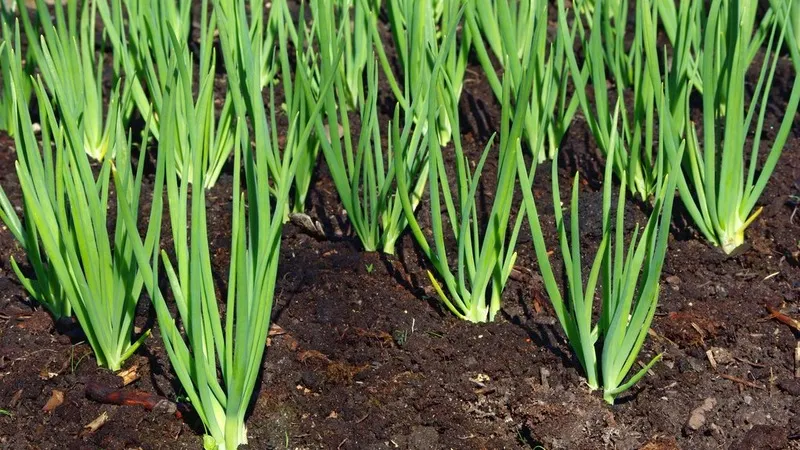
Avoid fertilizing onion beds with fresh manure. Instead, use mineral fertilizers containing nitrogen, potassium, and phosphorus, along with wood ash.
Note! Wood ash not only enriches the soil with nutrients but also helps prevent fungal diseases.
For acidic soils, apply dolomite flour or slaked lime to balance pH levels. A simple litmus test can determine soil acidity — a red result indicates high acidity.
Maintaining consistent soil moisture boosts yields, while excessive water leads to rot.
Why These Rules Matter
Key reasons to follow crop rotation:
- Proper rotation preserves soil fertility.
- It prevents the buildup of pathogens and pests.
- Strategic planting improves soil health.
Repeatedly planting the same crop in one location depletes the soil and encourages disease. In contrast, legumes, cover crops, and winter plants enrich the earth with nitrogen and other nutrients.
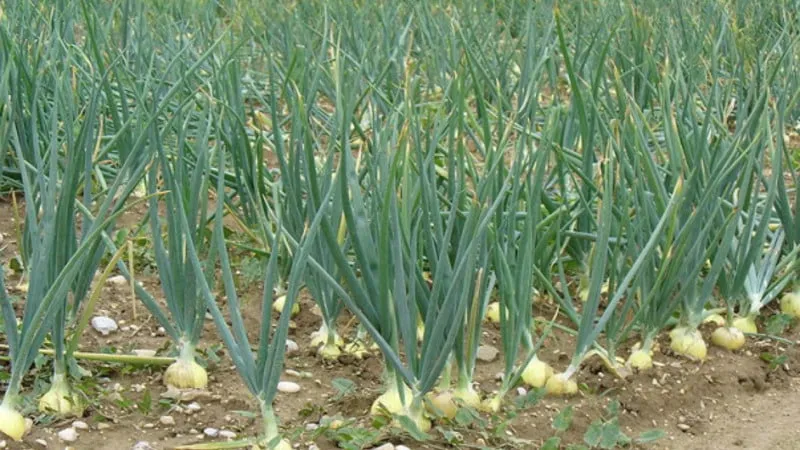
Crop Rotation After Onions in Greenhouses vs. Open Fields
Unlike open-field rotation (which requires annual changes), greenhouse planting allows 2-3 years of the same crop — but only if the topsoil is replaced yearly.
Fresh soil prevents nutrient deficiencies and fungal infections. Many European growers use heated greenhouses year-round, requiring biannual soil cultivation (autumn and spring) with organic matter or mineral supplements. After tilling, sterilize the soil with hot potassium permanganate or a fungicide like Topsin M.
Note! Topsin M is a systemic fungicide that prevents fungal diseases in crops.
Onions deplete soil nutrients significantly. Replanting them in the same spot reduces yields and risks pest/disease buildup. In open fields, repeating allium crops is impractical.
Does Soil Need Rest After Onions?
Key rule: After alliums, let the soil rest from this family for three years. This break addresses two issues: nutrient depletion and disease accumulation.
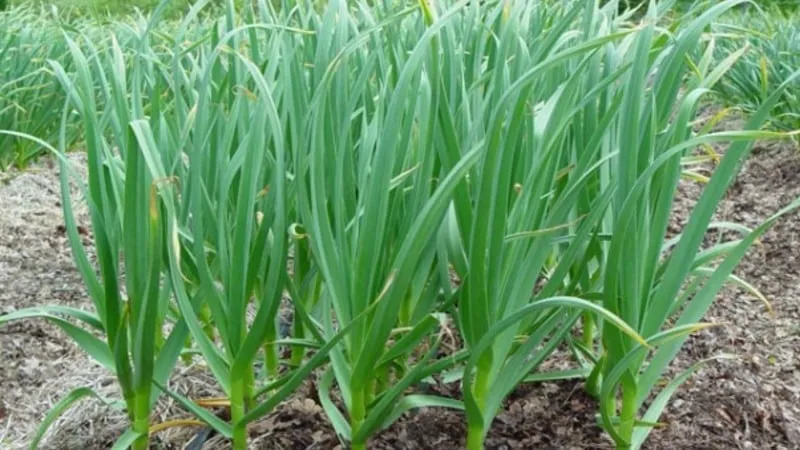
What to Plant After Onions Next Year
Suitable follow-up crops include nightshades (tomatoes, peppers), cucurbits (zucchini, pumpkins), legumes (peas, beans), winter plants, and root vegetables. These resist allium-specific diseases and thrive in post-onion soil.
Optimal choices are potatoes and bell peppers, which adapt well to former onion beds and face no shared pathogens.
Rotation guide after onions:
- Best successors — Legumes (beans, peas, chickpeas), root vegetables (carrots, beets, turnips), nightshades (potatoes, peppers), cucurbits (cucumbers, squash, melons).
- Possible successors — Aubergines, tomatoes, cabbage.
- Poor successors — Alliums (leeks, shallots), garlic, corn.
Best Fast Follow-Ups After Onion Harvest
In August, after harvesting onions, consider:
- Lettuce (choose summer-resistant varieties).
- Early-maturing cabbage (ultra-fast hybrids work best).
- Fast-growing carrots or beets (not for storage but ideal for fresh use).
- Daikon radish (plant seeds shallowly).
- Radishes (late-summer planting prevents bolting).
- Dill.
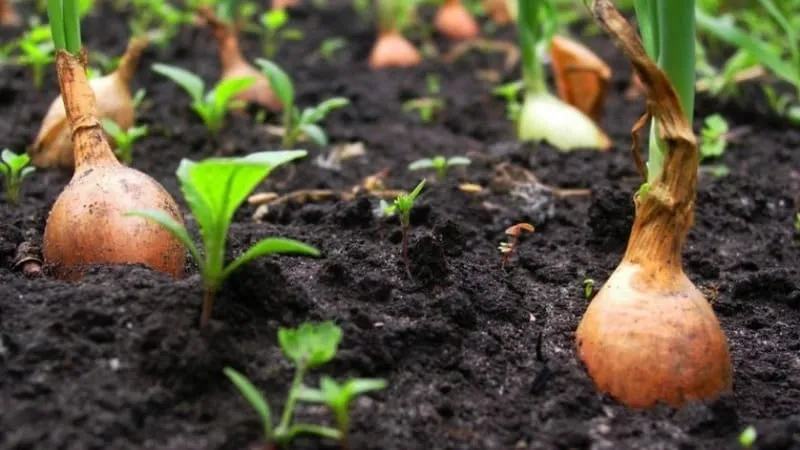
What to Avoid Planting
Never replant alliums (onions, garlic) — exhausted soil will stunt growth even with fertilizers. These plantings yield smaller bulbs and risk inherited diseases. Also avoid ornamental alliums like hyacinths.
After onions, till the soil and add potassium-rich fertilizers.
Best Predecessors for Onions
Ideal crops to plant before onions:
- Zucchini;
- Cover crops (clover, vetch);
- Beans;
- Peas;
- Early potatoes;
- Cucumbers;
- Pumpkins;
- Cabbage.
These create nutrient-rich soil for robust onion growth.
Onions also thrive in soil previously amended with organic compost. Avoid fresh manure during their growth cycle.
Winter onion sets grow well after maize, tomatoes, lettuce, or cucumbers. They sprout at +5…+7°C, though colder temperatures delay emergence.
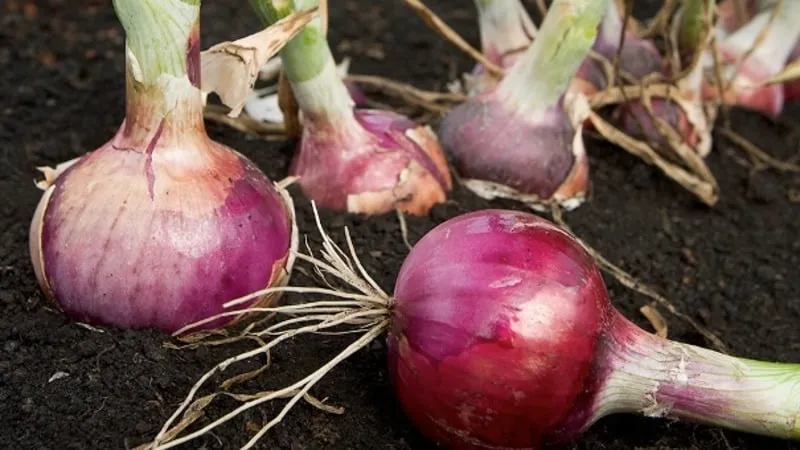
Worst Predecessors for Onions
Avoid planting onions after:
- Strawberries;
- Leafy greens;
- Herbs (parsley, cilantro);
- Carrots;
- Turnips;
- Radishes;
- Other alliums.
Best and Worst Companion Plants
Onions pair well with strawberries (but don’t follow them — their deep roots demand shallow-rooted successors). Other good neighbors: carrots, celery, beets, and head lettuce.
However, avoid planting near: beans, peas, or sage.
Note! The classic duo — onions and carrots — mutually repel pests. Carrots deter onion flies, a major threat.
Tips from Experienced Gardeners
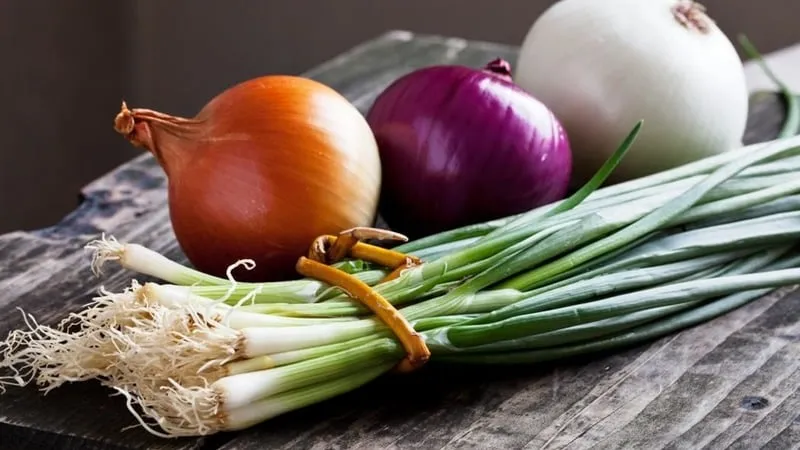
Post-onion beds suit legumes and winter crops best. Legumes replenish the nitrogen that onions deplete. Nightshades also thrive if you amend soil with minerals and ash.
Onions grow fastest in warm, sunny spots. Avoid shady areas, low-lying wetlands, or cold soil. Prepare beds in autumn with compost and ash (never fresh manure).
Pro tip: Plant onions after potatoes — but check for nematodes or wireworms first.
Conclusion
Ignoring crop rotation for alliums leads to declining yields and smaller bulbs. Over-fertilizing harms plants more than helps. Instead, follow agronomic practices to maintain soil health and consistent harvests.







